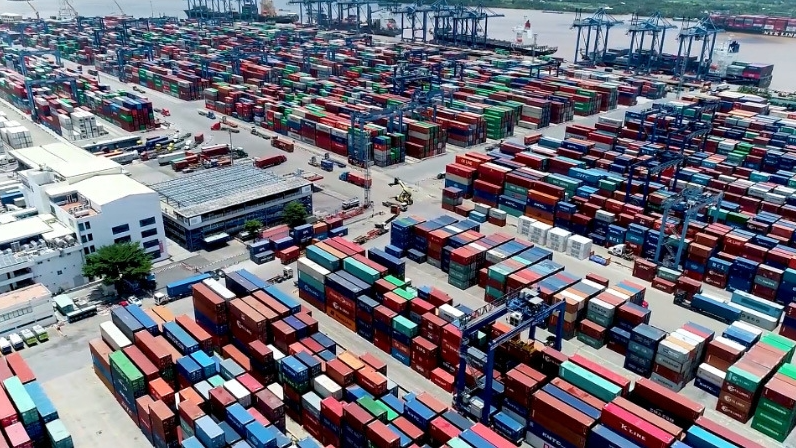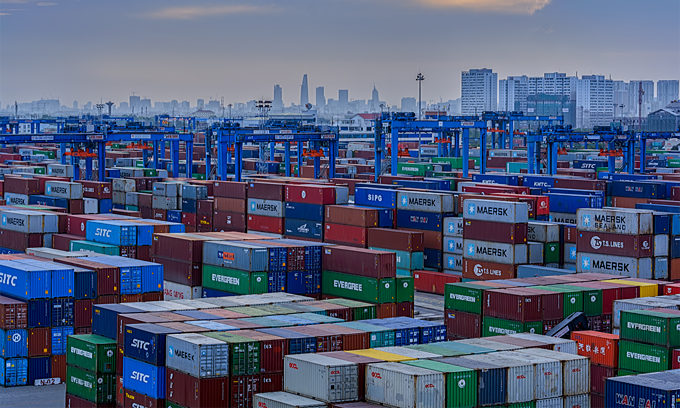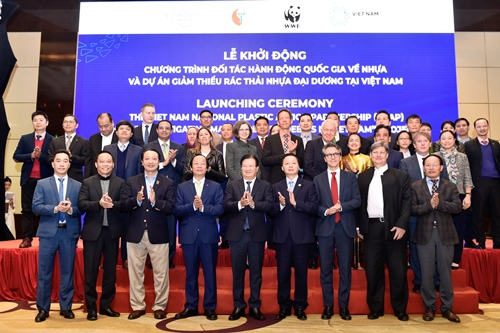Vietnam seeks to become world's lead in seafood production and exports
A report compiled on the implementation of the strategy has recently been sent by the Ministry of Agriculture and Rural Development (MARD) to Prime Minister Nguyen Xuan Phuc for consideration and subsequent approval.
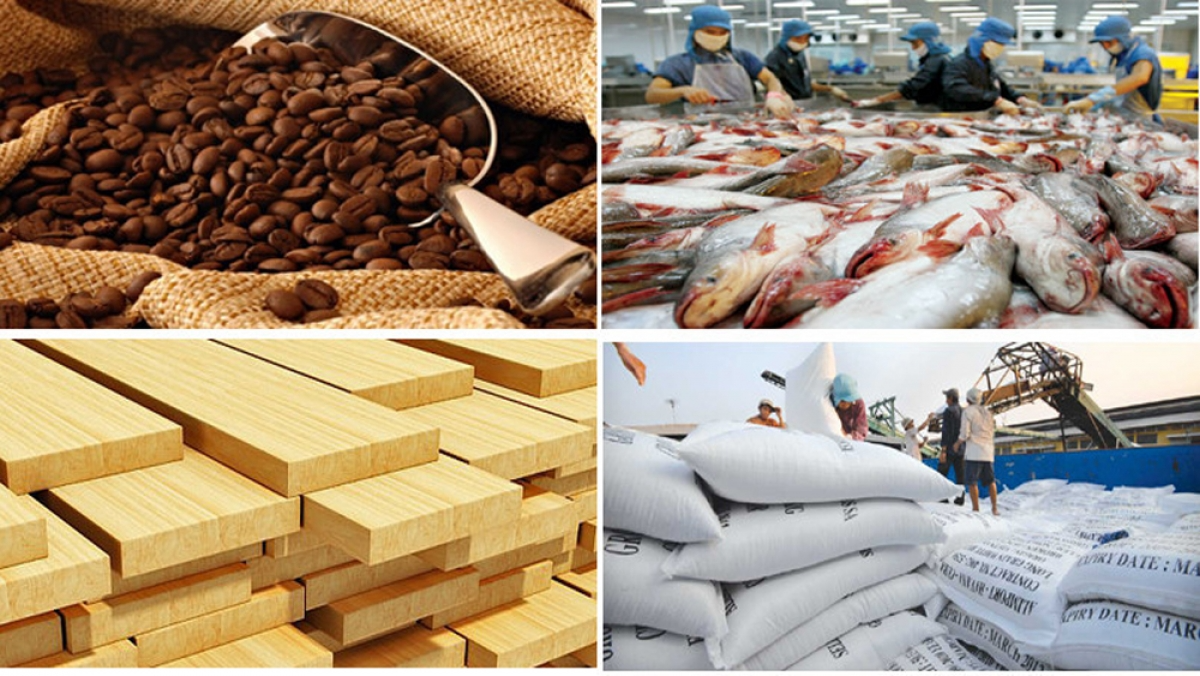 |
| With a vision towards 2045, the industry will strive to become a modern and commercially sustainable part of the national economy, featuring advanced management, science and technology (Photo: VOV) |
According to SEAFDEC, Viet Nam is geographically endowed with ideal conditions for the thriving fishery sector. Accordingly, the fisheries sector plays an important role in the country’s economy. Given the vital role of fishery, the Government of Viet Nam has strongly committed to its development. The Government of Viet Nam aims to turn the country into a global leading seafood exporter which is set out in the country’s fisheries development strategy plan 2020. Under this plan, the seafood industry is expected to contribute 30-35% to the country’s agro-forestry-fisheries GDP.
In 2015, the export turnover of Viet Nam’s fishing industry reached 6.5 billion US$, which increased 16 times during the last 20 years. This growth has led Viet Nam to become one of the five largest seafood exporters in the world together with Indonesia and Thailand, and the third in fishery and aquaculture production, after China and India, and the 13th on fish yields.
| Deputy Minister of Agriculture and Rural Development Phung Duc Tien emphasized that the issuance of the Vietnam Fisheries Development Strategy to 2030, with a vision towards 2045, is essential for the fisheries sector to progress into a fresh stage of development. This will be based on the outstanding achievements recorded during the previous period, in addition to plenty of challenges that are likely to emerge in the new context. |
The main target set by 2030 will be the growth rate of aquatic production value of 3.0% to 4.0% annually, while the total output of domestically produced aquatic products will reach 9.8 million tonnes. Of the total, aquaculture output stands at 7.0 million tonnes whilst fishing production volume is at 2.8 million tonnes and seafood export turnover value is between US$14 billion and US$16 billion. The sector is expected to create jobs for over 3.5 million workers, with their per capita income being equivalent to the average income of workers nationwide.
With a vision towards 2045, the industry will strive to become a modern and commercially sustainable part of the national economy, featuring advanced management, science and technology, while also holding an important position in the structure of agricultural and marine-based economic sectors. This will therefore allow contributions to be made to ensure nutrition and food security, national defense and security, along with sovereignty of the country’s sea and islands.
The MARD has also submitted a report to PM Phuc regarding the approval of a scheme to promote the export of agro-forestry-fishery products until 2030, with the goal of turning the nation into one of the top 10 leading agro-forestry-fishery product processing countries.
The Ministry also emphasized that in terms of the export achievements of the whole country, the agricultural sector has made a great contribution due to being the only sector that continuously maintains a trade surplus.
At present, the nation ranks 16th in the world in terms of export turnover of agro-forestry-fishery products, with rice, fruit and vegetables, coffee, cashew, rubber, wood and wood products, and seafood, including shrimp and catfish, earning an annual export turnover of over US$1 billion.
The export turnover of these items mainly focuses on the commodity groups in some markets such as China, the United States, the EU, and Japan.
The project to promote the export of agro-forestry- fishery products to 2030 can be considered necessary in practice, as it strives to achieve the goals of developing the nation into an exporter of agro-forestry-fishery products that possess high quality in the ASEAN region and around the world. This will thereby secure a firm position in the global supply chain of agriculture, forestry, fisheries, and food.
The country is set to reach approximately US$51 billion in export value of agricultural, forestry and aquatic products by 2025, with roughly 20% of the country's agro-forestry-fishery export products labeled with the national brand. Indeed, 50% of products will be traceable and roughly 50% of the export value of agro- forestry- fishery products will undergo processing and deep processing.
By 2030, the export value of the Vietnamese agro-forestry-fishery industry looks poised to reach approximately US$62 billion, with about 40% of the nation’s agro- forestry- fishery export products bearing the national brand. As such, 70% will be traceable whilst about 60% of the export value of these products will come through processing and deep processing.
According to SEAFDEC, the seafood exports of Viet Nam have made great strides in nearly 20 years. The seafood export turnover from as low as US$ 550 million in 1995 has experienced strong growth over the years with an average growth of 15.6% per year. This growth has made Viet Nam one of the five largest seafood exporters in the world, and a leader in supplying fish and fishery products to the global market. In 2000, the seafood export of Viet Nam has a breakthrough growth due to the strong development of its aquaculture, especially its catfish and brackishwater shrimp (black tiger shrimp and white shrimp) culture.
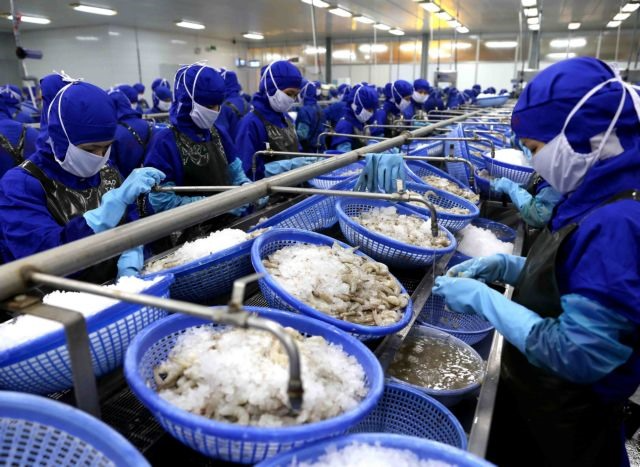 |
| A processing line of frozen shrimp at Thuận Phước Seafood and Trading Corporation. (Photo: Vietnam News) |
After 12 years, seafood export turnover increased more than four times from nearly US$ 1.5 billion in 2000 to US$ 7.8 billion in 2014. In 2016, the country’s seafood products were exported to 160 countries and territories. The three major markets are the the United States (20.6%), EU (17.3%), and Japan (15.7%), with potential markets such as China (12.2%) and the ASEAN (7.5%).
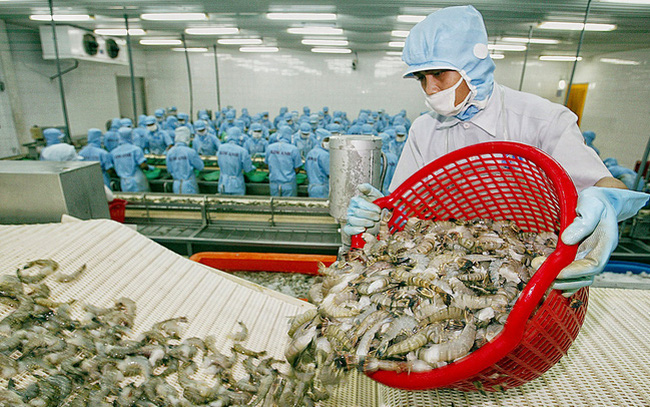 | Vietnam’s shrimp exports rise amidst COVID-19 pandemic Shrimp exports are set to increase by 12.4 percent this year to $3.78 billion notwithstanding the major impact of the COVID-19 on the seafood industry. |
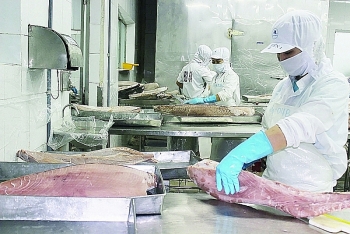 | Increase in order from EU for Vietnamese seafood after EVFTA Seafood volume exported to EU of Vietnam has been risen dramatically since the Vietnam-EU Free Trade Agreement (EVFTA) took effect (August 1, 2020). |
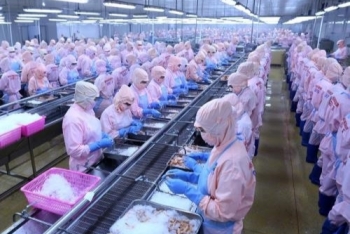 | Vietnamese seafood exports increase after EVFTA comes into force Vietnam Association of Seafood Exporters and Producers (VASEP) has said that seafood exports to Europe have witnessed many positive signs since the EU-Vietnam Free Trade ... |
Recommended
 National
National
Shangri-La Dialogue 22: Vietnam Highlights Some Issues of Ensuring Stability in a Competitive World
 National
National
Vietnam News Today (Jun. 3): PM Pham Minh Chinh to Attend UN Ocean Conference, Visit Estonia, Sweden
 National
National
Vietnam News Today (Jun. 2): Vietnamese Trade Mission Sounds Out Business Opportunities in United States
 National
National
Vietnam News Today (Jun. 1): Vietnamese, Japanese Firms Foster Partnership
Popular article
 National
National
Vietnam News Today (May 31): Vietnam Strongly Supports Laos’s National Development
 National
National
Vietnam News Today (May 30): Vietnam, Venezuela Reinforce Ties Through People-to-people Diplomacy
 National
National
Vietnam News Today (May 29): Vietnam and Hungary to Expand Cooperation into New Areas
 National
National

